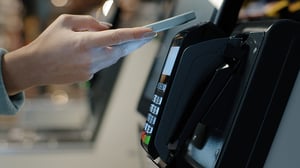Part 2: Your Complete Guide to Innovative Digital Payment Options
 Welcome to Part 2 of our Complete Guide to Innovative Digital Payment Options. In Part 1, we provided a brief overview of the advanced technology that underpins digital payments and explained why they are increasingly crucial for credit unions. As we mentioned earlier, comprehending the fundamental aspects of this technology and its workings is essential to seamlessly integrate it into your credit union, thus benefiting both members and the institution.
Welcome to Part 2 of our Complete Guide to Innovative Digital Payment Options. In Part 1, we provided a brief overview of the advanced technology that underpins digital payments and explained why they are increasingly crucial for credit unions. As we mentioned earlier, comprehending the fundamental aspects of this technology and its workings is essential to seamlessly integrate it into your credit union, thus benefiting both members and the institution.
Digital Account Services: The Key to Enhancing Member Experience
In Part 2, we will delve deeper into the various types of digital payment options available and discuss the mechanics behind each type of payment, as well as the potential security risks involved. By the end, you will have a comprehensive understanding of the various digital payment options at your disposal, allowing you to make informed decisions about which options to offer your credit union members.
The Various Types of Digital Payment Options
All told, there are a few different types of technologies that fall under the umbrella of digital payments for credit unions. They include ones like:
- Electronic payment systems. These are options that many are already familiar with, especially if they've ever sent an eCheck or wire transfer from their bank.
- Mobile payment apps, which include options like Venmo and Zelle.
- Mobile wallets, with Apple Pay and Samsung Pay being two of the top examples.
- Digital cards, which can be credit, debit, or even prepaid cards that are issued by a credit union or other financial institution.
- Contactless payments, which can include payments made using NFC (near-field communication) technologies or even MST (magnetic security transmission).
How These Digital Solutions Work
While the technology behind these digital payment options may be sophisticated, the nuts and bolts of how they work are actually quite straightforward.
First, someone must have an established account with a financial institution--like they would if they were a member of a credit union that offered digital payments. Digital issuance is then used to make sure they have the necessary mobile capabilities. They also need to have sufficient funds in said account to cover whatever transaction they're trying to make.
If they're paying directly from a payment app that is linked to that account, the money is simply debited the same way it would be in a transaction with a credit or debit card. If they're using a mobile wallet, the information passes through what is essentially a secure third party like Apple Pay or Google Pay.
The digital transmission itself occurs through the underlying processing system. Provided that the merchant has a point-of-sale system that supports various digital payments, all relevant information is transmitted securely in seconds and all parties can go about their business.
The Power of Digital Cards From a Security Perspective
One of the major features of digital payment solutions--and one of their biggest benefits--has to do with the concept of security. A digital card, for example, allows for a process called tokenization. This replaces sensitive data (like a credit card or bank account number) with a unique identification symbol. All of the same information is retained, just in a far more secure manner.
So where someone might steal your physical wallet or credit card, the same cannot be true of a digital wallet or other solution thanks to this type of digital security technology. Digital payments also offer far superior methods of authentication and data encryption as well.
At FLEX, we believe that digital payment options like those mentioned above are the way of the future for credit unions. This is true both in terms of how they differentiate themselves from their competitors and with regard to how they forge better and longer-lasting relationships with members. To find out more information about other digital services that your credit union can and should embrace, download our Digital Account Services Guide.



